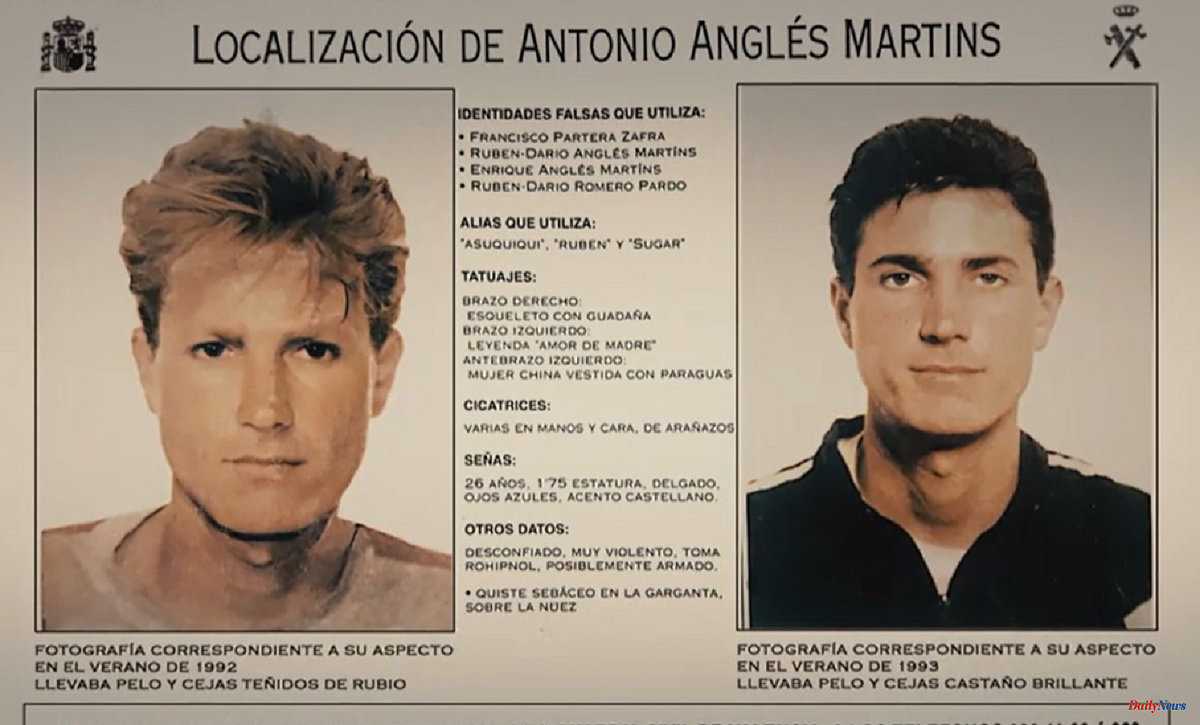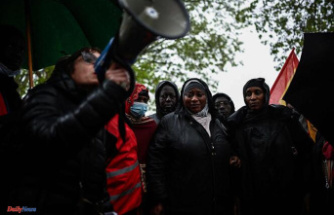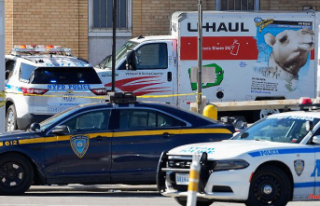"Have you seen this man?" is the question that for 30 years has hovered over one of the worst crimes that Spain has experienced: the torture and murder of the Alcàsser girls. The man, Antonio Angles; history, a leak, surrounded by conspiracies, doubts, hypotheses and theories that began on January 24, 1993, the same night that the bodies of Miriam, Toñi and Desireé were discovered, and that even today no one knows how to answer or, that was believed.
In 2018, investigative journalists Genar Martí and Jorge Saucedo sowed a seed that is bearing fruit today. Following the publication of the book El Fugitiu (The Fugitive), the laSexta Investigation Program produced a report on this work in which both journalists tried to answer the question at the beginning of this report.
The obsession of Martí and Saucedo with the surprising escape of Anglés did not allow them to leave him alone and they continued their investigation for five years on their own, with their means in an attempt to discover what happened to the murderer of the Alcàsser girls, where he is Antonio Anglés, if he is still alive, if he died, how far he got, who saw him, who helped him... An infinite number of questions that laSexta tries to answer tonight in the three-chapter documentary Anglés, history of a fugue.
"Anglés, historia de una fuga demonstrates, among other things, that the stowaway who was in the inevitably famous City of Plymouth was, without a doubt, Antonio Anglés", explains Luz Aldama, director of Actualidad programs for Atresmedia TV and responsible for of the documentary.
"The ship's crew recognizes the photographs of the fugitive in the docuseries. Until now none of them had been shown," he continues, adding what is probably the greatest milestone in the Martí and Saucedo documentary: "The theory of conspiracy always maintained that Anglés did not leave Spain. Now it is proven how unfounded speculations have fed an entire conspiracy current, capable of inventing anything without proving it".
To reach the end or "the beginning of the end", as Genar Martí asserts in the documentary, one must go to the beginning of a leak that, even though it occurred almost 30 years ago, continues to mark the darkest history of our country.
On January 24, 1993, two beekeepers found the half-buried corpses of the three girls in a grave in the La Romana ravine, a place with difficult access near the Tous reservoir. In a first inspection of the place carried out by the Civil Guard, a medical report was found in the name of Enrique Anglés. A "miracle" ensure the testimonies of the agents who were present. What is probably one of the biggest police persecutions in Spain is quickly activated.
After the arrest of Miquel Ricart, his subsequent confession, the declaration of the Anglés brothers and the evidence obtained in the records, Antonio Anglés becomes the most wanted man in Spain. He spent 44 days chasing a murderer who crossed Spain from end to end, from Catarroja to Lisbon, without anyone being able to hunt him down. Mistakes? There were. Irresponsibility? Also. "If we are like this 30 years later and we still do not know if he is alive or dead, it is because many things have not been done well or have not been done," says Saucedo in the docuseries.
"There were many mistakes," says Aldama. "Fruit of the lack of means in the 90s, the precipitation of wanting to catch him, failures in the coordination of teams and the luck that Anglés himself had at key moments to escape the police siege. Without leaving aside the responsibility of some citizens, as demonstrated in the documentary, who had to denounce the moment their paths crossed with Anglés on the run and out of fear they waited up to three days to speak with the Civil Guard," he concludes. All of this not only facilitated the escape of Antonio Anglés who, according to testimonies collected in the documentary from friends of his childhood and adolescence, as well as fellow prisoners, prepared for years, but also increased by the media of the time, Antonio Anglés became a black legend that marked, and still does so today, an entire generation.
Children who used the disappearance of the murderer in horror stories, frightened parents who created theories in their minds about the possibility that Anglés took their children and everything wrapped up in a story that the documentary dismantles point by point: Antonio Anglés did come to Dublin, Antonio Anglés did go up to the City of Plymouth, Antonio Anglés did manage to flee.
In fact, it is in the second chapter of the docuseries where one of the most mysterious episodes of Antonio Anglés' escape is addressed: his trip as a stowaway on the City of Plymouth freighter, bound for the British city of Liverpool, and his strange disappearance. , hours before reaching your destination. The directors of the documentary series have obtained the unpublished testimony of the people who lived with Anglés in those last moments and who hold the key to what could have happened on that journey. The entire crew of the City Plymouth saw Anglés, the entire crew recognizes his photograph, despite the fact that they have seen it for the first time in the hands of the two journalists because no one showed it to them at the time, and they all assure that someone helped him escape from the cabin in which the captain of the ship locked him up.
"The testimony of some sailors is of great value because they are the only ones that exist, since they were never interrogated by the Spanish police. Nor can they be because they died after these recordings. Their version clarifies once and for all what happened on the voyage that Anglés did as a stowaway. An event that has not been thoroughly investigated in 30 years," says Aldama. As surprising as it may seem, it is.
As explained in the docuseries, Antonio Anglés boarded the City of Plymouth on March 18, 1993. The freighter, with 12 crew members plus the captain, always followed the same route, but on that trip, according to the captain of the ship in the docuseries, modify the journey to Bilbao. It is in the Bay of Biscay that the crew discovers the stowaway. Nobody knows who he is and at first everyone thinks he is a sailor looking for a new life on the other side of the English Channel. The captain gives the order to lock him in one of the cabins that nobody used. That night, without any measure of protection or surveillance, Anglés manages to flee in a lifeboat. When the captain is informed of the escape he notifies the Irish Coast Guard. They find him in the middle of the Cantabrian Sea and return him to the ship. No one informs the Spanish authorities, an order is simply given to guard it until the City of Plymouth docks in Dublin. And so they do.
With logs they block the doors of the cabin, the window of the same and an order is given for several sailors and the boatswain to watch the stowaway. None knew the heinous crime he had committed. The next morning, the freighter docks in Dublin Port. There dozens of Irish police officers board the ship. When they go to the cabin to stop him - they already knew who he was and what he had done - Anglés is not there. What happens next? How did Angles escape? The Irish Police take a statement from the crew. Just 38 pages of ambiguous statements. Nobody shows them the image of the most wanted man in Spain. Nobody informs them of anything. The City of Plymouth leaves for her destination, Liverpool.
And it is the moment in which the legend is born. Antonio Anglés drowned, Antonio Anglés jumped from the boat and died, nobody knows where Antonio Anglés is. However, the investigation by Martí and Saucedo reveals what no one bothered to reveal at the time. The testimony of a docker from the port of Dublin who, although he already declared it at the time without anyone giving it importance, declares how he saw a man sliding down one of the ropes of the freighter while the police searched the City of Plymouth. But not only did he see how that man fled, but he even crossed paths on two occasions that night. And yes, it was Antonio Anglés.
What happened next is described by Aldama as the "highlight of Anglés, the story of a fugue". Two new lines of investigation that no one reached for 30 years and that are related, on the one hand, to the disappearance of a young American living in Dublin, 48 hours after Anglés escaped from the City of Plymouth and the theory that Anglés fled to Brazil on another freighter. There is no solid proof, but the testimonies of the docuseries open the possibility that both were real.
"I think there are enough elements to continue investigating what happened with Antonio Anglés. This is not going to be our last time. I think we will meet again on the road," says Martí. A certainty, Anglés got off the City of Plymouth in Dublin with the help of someone from the crew that unfortunately can no longer be confirmed as all of them have died. One unknown, what happened next? Did he drown? It is the line of investigation followed by the Spanish Police in collaboration with the Irish. In fact, the Spanish Police have asked the Irish authorities to exhume two bodies found on the Irish coast that match Anglés's description. It has not yet been possible to compare the DNA. And the theories that he fled, that he could have killed another young woman and that he could have fled to Brazil. The mystery continues, but with more rays of light than 30 years ago.
And a reality: if no one finds him before, on December 14, 2029, Antonio Anglés will be a free man, and his crimes will go unpunished.
According to the criteria of The Trust Project












